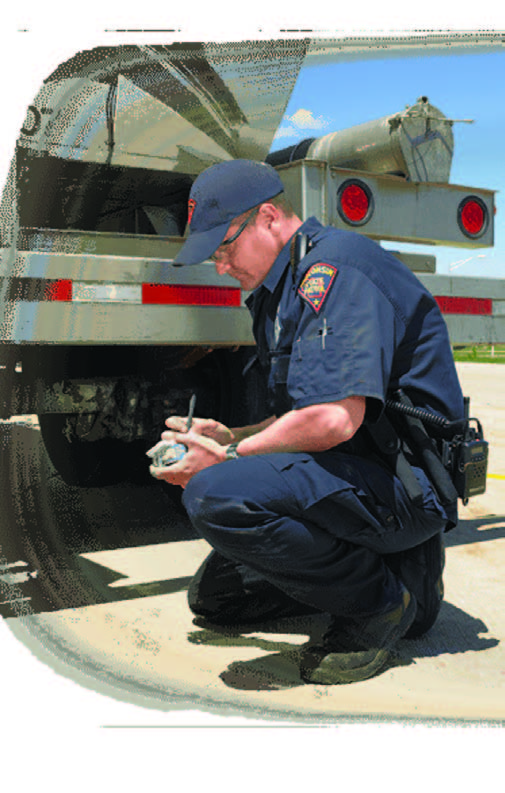Shut Down: DOT Compliance in the Twenty-First Century
Shut Down: DOT Compliance in the Twenty-First Century
What do you think about DOT compliance? Do you consider it your number one concern? Number two? Number three? The chances are it is not something that you think about very much. In your industry, DOT compliance has simply not been that big of a problem compared to other issues. Almost every company has a compliant drug and alcohol testing program. Everyone knows that you need DOT numbers on your trucks. As long as you don’t make any big blunders, the DOT leaves you alone and focuses on the trucking and bus companies.
Right?
Maybe that was true once. Over the past couple of years, however, that old paradigm has shifted dramatically. Now, if DOT compliance is not one of your top concerns, you are taking a huge risk. Managers that don’t enforce company-wide adherence to all the DOT regulations are gambling with their company’s future. Companies that violate the Federal rules face a bleak future of heavy penalties, out-of-service vehicles and sky-rocketing costs.
So what has changed? Why is DOT compliance such an important issue all of a sudden?
The answer: CSA.
CSA — COMPLIANCE FOR THE INFORMATION AGE
What is CSA? It is a Federal Government program that aims to improve compliance for all companies using Commercial Motor Vehicles. Short for ‘Compliance. Safety. Accountability’, it was created to identify and target companies that are not following the regulations. Essentially, it pulls in thousands of data points each month and tells the Federal government which companies they need to investigate and shut down. Even more worrying, it makes your safety history public for everyone to see. CSA is a game-changer.
Many companies have grown complacent about DOT compliance simply because they have had very little interaction with the Federal DOT over the years. There are only a thousand or so Federal Motor Carrier Safety Administration employees and more than eight million companies to be monitored. Under the old system, the under-staffed could only investigate companies at random and hope that they found something. Not surprisingly, their success rate was low. Most encounters ended with nothing more than time wasted for both the company and the DOT.
CSA was designed to avoid precisely that problem. Instead of targeting companies at random, the DOT is looking at thousands of data-points, from sources all over the country, to pinpoint the companies that need to be investigated.
You’ve probably not had a DOT audit any time recently, but what about a speeding ticket? Have any of your drivers been stopped with a broken tail light? Or for changing lanes improperly? Have any of your drivers been caught with out-of-date log books? There are thousands of such incidents every day. CSA collects all of this data. From state, local law enforcement and Federal inspectors, each month, the DOT pulls in huge amounts of data and ties the information back to your company.
Once they have that data, they sort it into seven different categories, each aimed at a different area of compliance. These categories, known as BASICs, are each given a score on a scale of 0 – 100. 0 is the best score that you can receive, 100 is the absolute worse. Each BASIC is also given a ‘threshold’, a score beyond which a carrier cannot cross. If your score goes above the threshold for that BASIC, that’s when the trouble begins.
LOOKING FOR TROUBLE
Companies with elevated scores will initially start to find themselves pulled over more often. They will also find their stops are longer and their inspections are more detailed. The BASIC information is sent to law enforcement and DOT inspectors. If one of your trucks drives by a police cruiser or has to stop in a weigh station, the officials can see if you are worth inspecting or not. They can also see what issues they might find if they look for them. Say one of your drivers was stopped in Arizona with a bad tire. Your driver in Nevada might find himself pulled over and waiting for a detailed wheel inspection. Perhaps one of your drivers got caught with an out-of-date log book. Now, the rest of your drivers are finding the DOT is going through their books in detail.
FREE MARKET ENFORCEMENT
That isn’t CSA’s only trick. The DOT has also made most of the BASIC information public. What does that mean? It means anyone can see your safety history. Your customers, your rivals, your insurance company — everyone can see your scores. Already, we are seeing companies lose lucrative bids and contracts because of their CSA scores. We’ve also seen alarming trends with insurance premiums.
It is not uncommon to see rates increase as much as 30% for carriers with high scores. Unable to put enough boots on the ground, the DOT is using the free market to enforce compliance for them.
Compliance as a Culture
CSA has made DOT compliance much more important. It has also made the DOT a much more powerful force. Carriers that want to stay in business need to take compliance very, very seriously. It is imperative that each area of compliance receives attention.
Compliance programs such as drug and alcohol testing must be perfect. Driver files, background checks and physicals must be done properly. Vehicle maintenance cannot fall by the wayside. Furthermore, carriers must instill a ‘Compliance Culture’. Every manager, every driver, every worker needs to be a part of the effort follow the regulations. Everyone at your company should know that their livelihood is put at risk whenever an employee cuts a corner, gets sloppy or drives unsafely.
CSA has changed everything. It has also made things much simpler. Now the industry runs on one rule: If you are not in compliance today, you will not be in business tomorrow.








